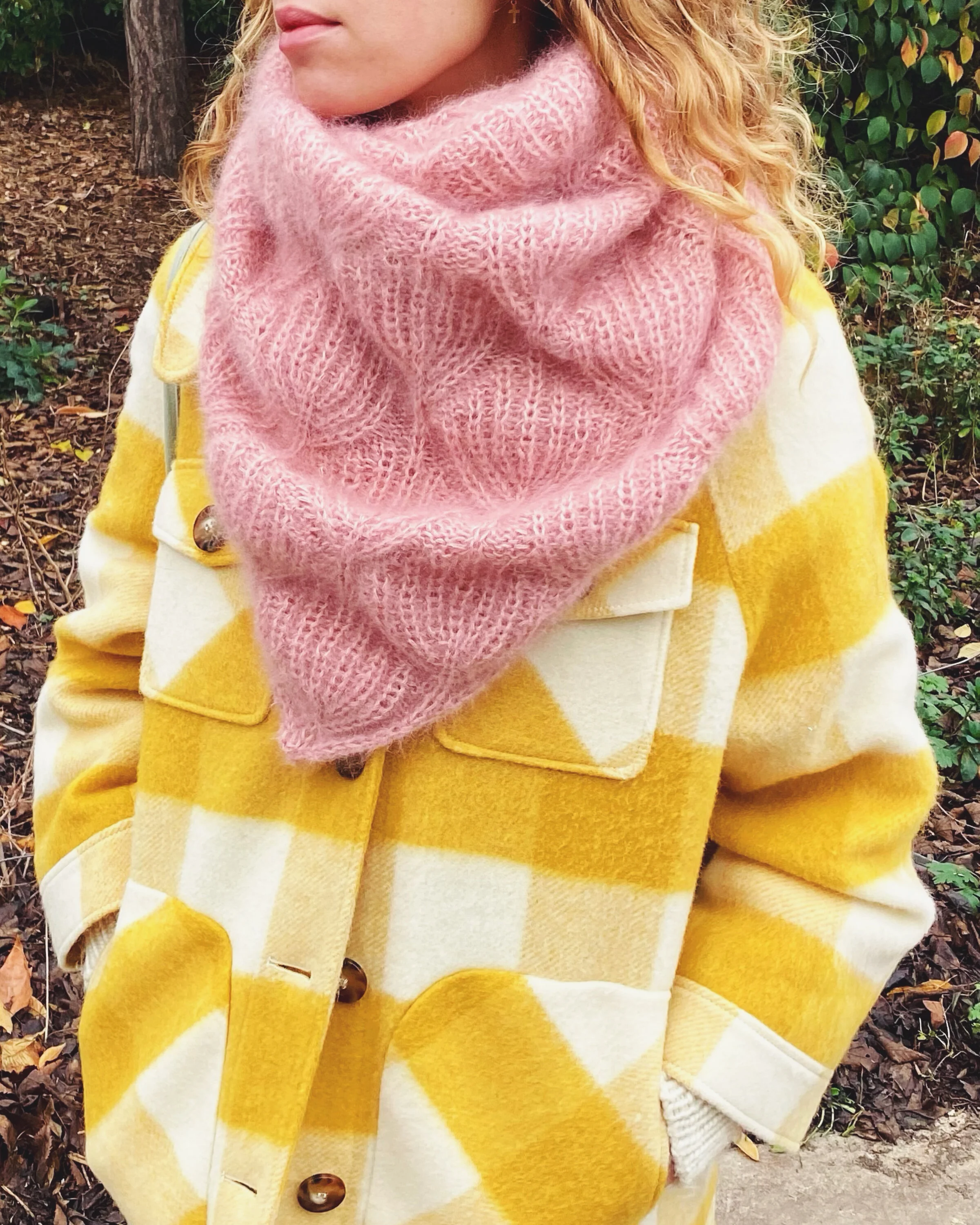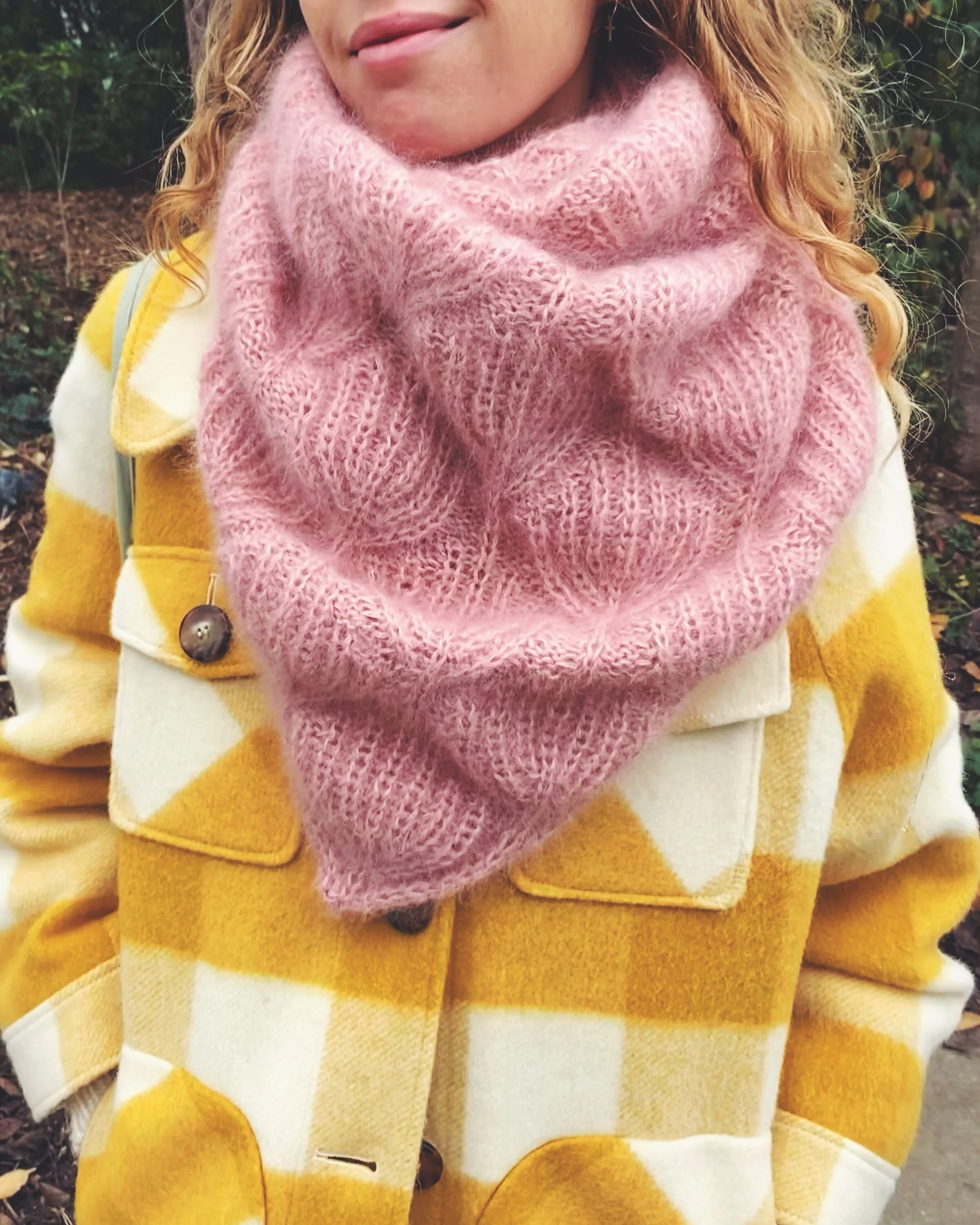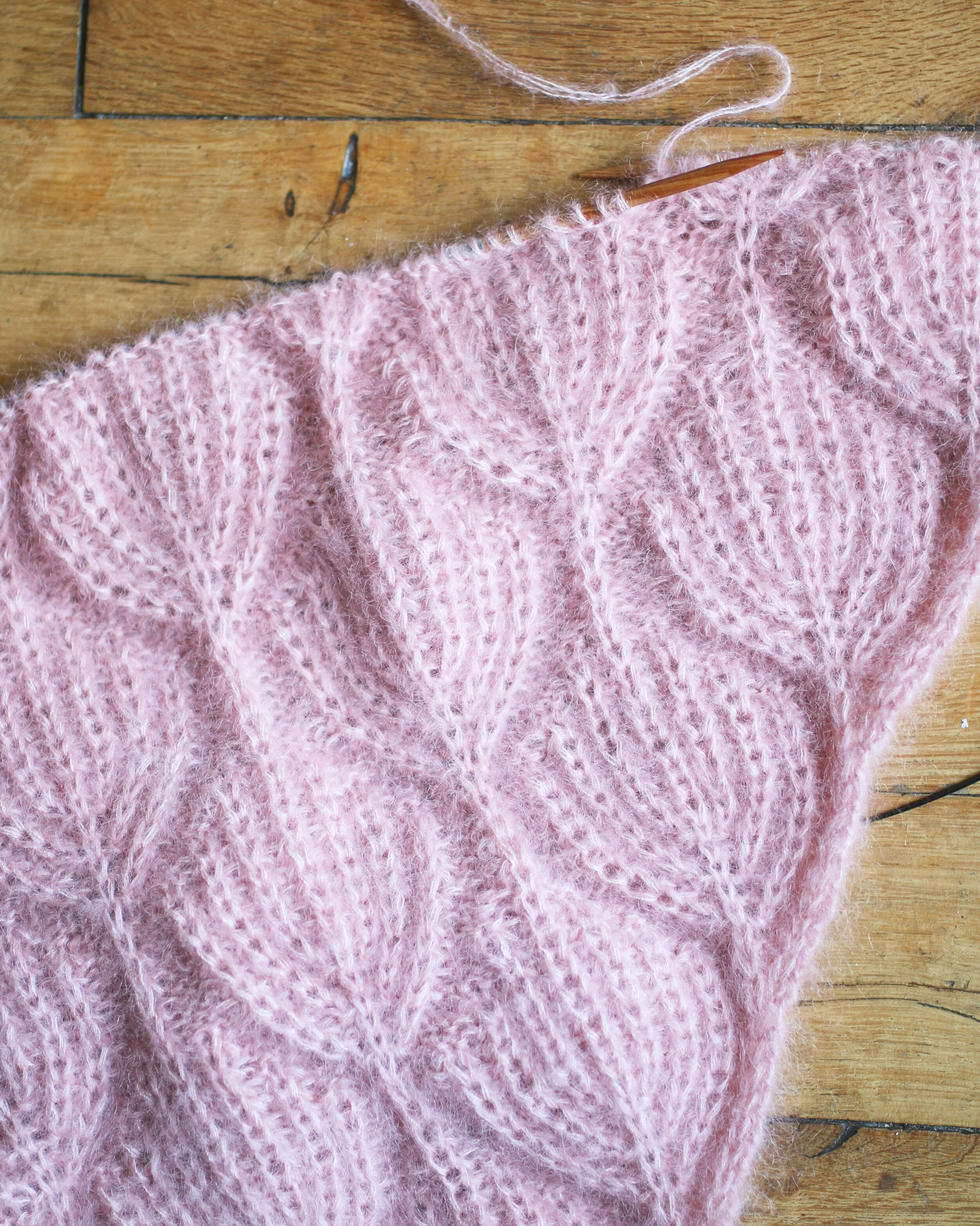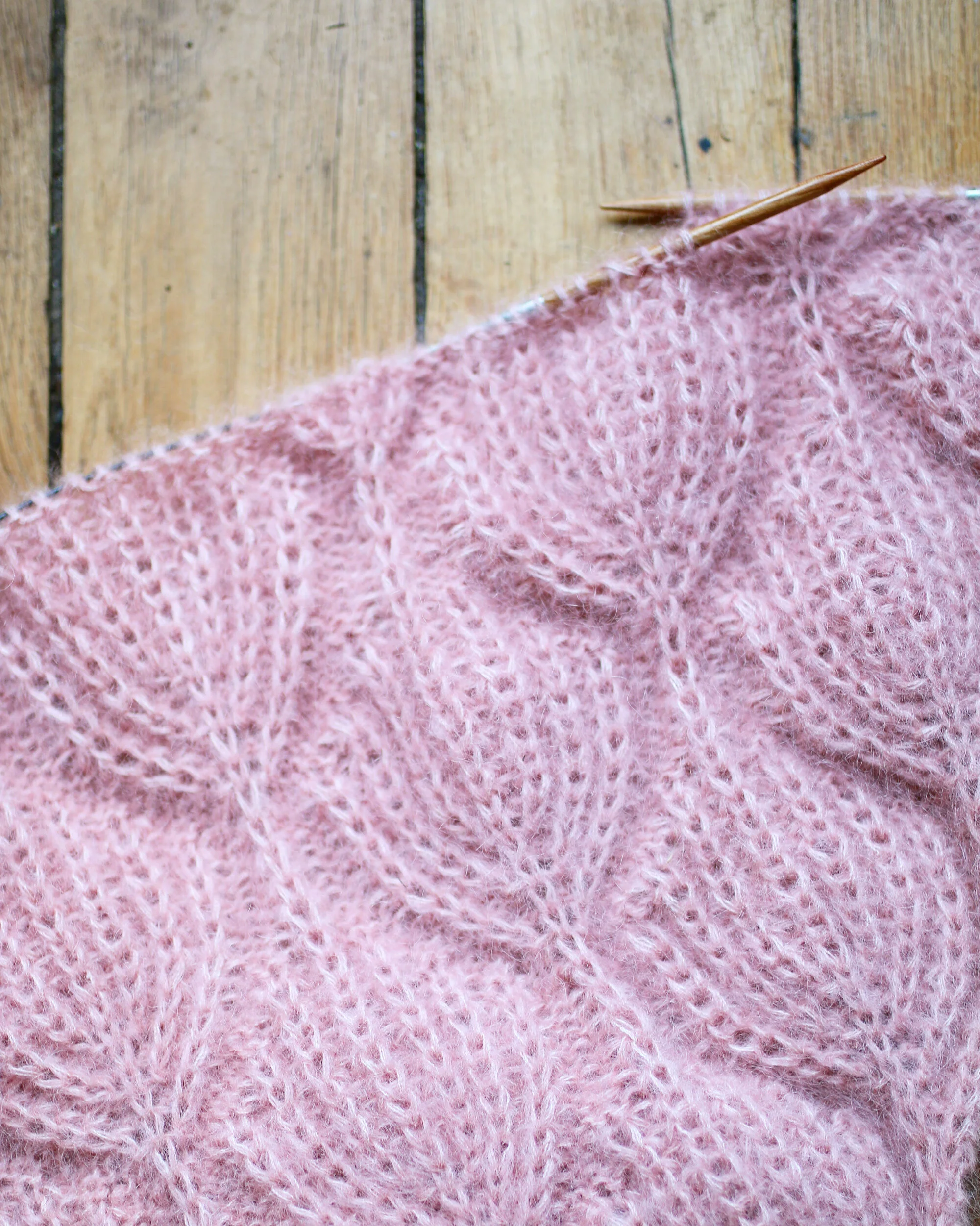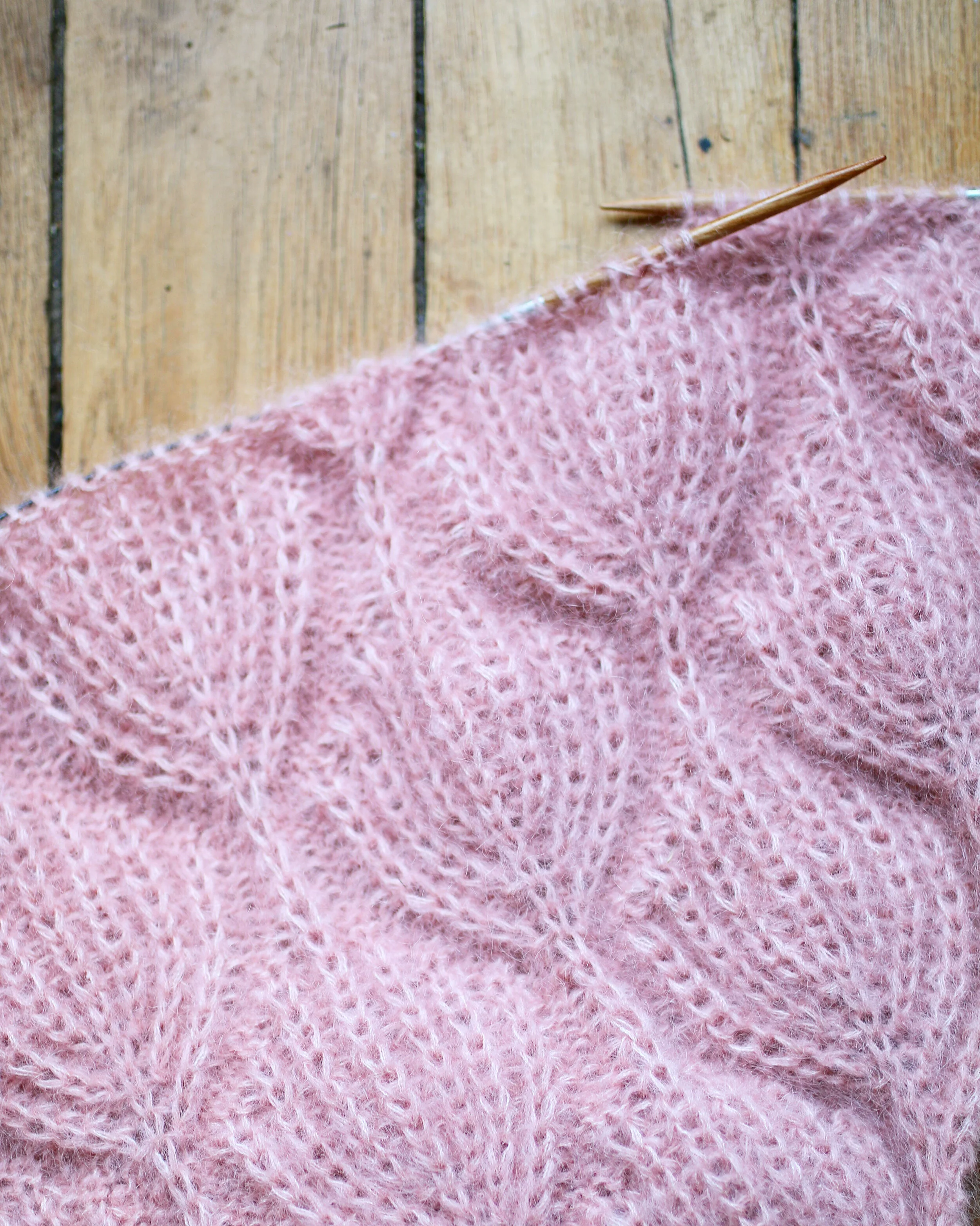Seashell shawl
Seashell shawl
Français & English
Téléchargement version PDF - Download PDF version
Niveau Avancé - Advanced Level
Le patron contient un rappel des techniques abordées et des liens interactifs vers les tutoriels sur le site Trust the Mojo.
The pattern includes reminders of the techniques and interactive links to tutorials on the website Trust the Mojo.
Langues français & anglais
Niveau Avancé
Le châle Seashell est d’un niveau avancé. La construction ne présente pas de difficultés particulières, mais le point de coquillage n’est pas le plus simple à tricoter, il demande de la concentration et fait appel à des techniques un peu complexes (mailles doubles, augmentations et diminutions) d’autant plus si vous tricotez en triple fil Mohair. Le patron contient cependant des explications écrites détaillées, des grilles, des supports vidéo pour les techniques un peu particulières, et une check-list pour vous aider à suivre votre progression : il reste donc accessible aux tricoteurs intermédiaires. C’est un bon patron pour passer du niveau intermédiaire au niveau avancé si vous êtes motivés et que vous aimez les défis !
Construction
Le châle Seashell se tricote en tricot plat, en partant de la pointe, et en faisant des augmentations de chaque côté sur tous les rangs impairs.
Le point
Si vous avez déjà tricoté le pull Seashell, vous remarquerez que pour le châle, il s’agit d’une variante du point de coquillage, il se tricote donc différemment. Pour ce patron, le motif coquillage se répète sur 20 mailles et 20 rangs (à partir du rang 23), avec une bordure de motif à chaque extrémité.
Techniques
mailles endroit et envers - mailles doubles - augmentations doubles et intercalaires - tricoter 2 mailles ensemble à l’envers - rabattre les mailles
Le patron inclus un rappel des techniques en fin de patron, sur www.trustthemojo.com et sur Youtube
MATÉRIEL
• 175 g de fil Mohair et Soie - 25 g/210 m - tricoté en triple fils
• Des aiguilles circulaires 5 mm câble 100 cm ou plus
• 1 aiguille 6 mm pour rabattre les mailles
• 1 aiguille à laine, 1 paire de ciseaux, des épingles et un support pour le blocage
Choisir la laine
Le patron se tricote en triple fils (on tricote trois fils ensemble) avec du fil Mohair/Soie 25 g = 210 m. Voici quelques exemples de laines que j’ai testées et qui fonctionnent bien pour ce patron :
- Drops Kid Silk de Drops Design
- Phil Mohair Soie de Phildar
- Soft Silk Mohair de Knitting for Olive
Pour réaliser ce châle de 64 cm x 130 cm, j’ai utilisé 7 pelotes Phil Mohair Soie. J’ai donc divisé la dernière pelote en 3 petites pelotes d’environ 8,30 g pour pouvoir la tricoter en triple fils.
Note : si vous n’êtes pas encore très à l’aise avec ce type de point à mailles doubles, il vaut mieux éviter les laines très foncées et privilégier les couleurs claires, le motif sera plus facile à distinguer.
Variantes
- pour cette version, j’ai utilisé des aiguilles 5 mm et du fil Mohair/Soie, mais vous pouvez adapter facilement ce patron pour le tricoter avec d’autres tailles d’aiguilles et différentes qualités de fils. Pour obtenir les mêmes dimensions que celles indiquées dans ce patron, il vous suffira d’ajouter des bandes de motif - si vous choisissez une taille d’aiguilles et de fils plus petits, ou d’en supprimer si vous optez pour des aiguilles et du fils de plus grande taille. Avant de choisir votre laine, faites un essai pour vérifier que le motif ressort bien (avec certaines matières, on ne le distingue pas bien).
L’échantillon
13 mailles x 26 rangs = 10 x 10 cm avec des aiguilles 5 mm, au point de côtes perlées.
Language french & english
Level Advanced
The Seashell shawl is an advanced level pattern. The construction is not particularly difficult but the Seashell stitch is not the easiest to knit, it requires concentration and includes complex techniques (brioche stitch, increases and decreases), all the more if you use triple strands of Mohair. However, the pattern includes detailed written instructions, charts, video tutorials for special techniques and a check-list to help you keep track of your progress, so it remains accessible to intermediate knitters. It’s a good pattern il you are looking to move up from an intermediate to an advanced level, if you are motivated and like challenges!
Construction
The Seashell shawl is worked in flat knitting from the tip up, with increases on each side and on every odd row.
The stitch
If you have already knitted the Seashell Sweater, you will notice that for the shawl, the stitch pattern isn’t quite the same. In this pattern, the seashell stitch is worked on 20 stitches and 20 rows, starting row 23, with a slightly different pattern on each edge (to make the increases).
Techniques
knit stitch - purl stitch - brioche stitch - increases - decreases - brioche stitch cast off
The pattern includes reminders of the techniques at the end of the pattern, and interactive links to tutorials on www.trustthemojo.com and on Youtube
Supplies
• 175 g of Silk Mohair - 25 g/210 m (230 yds) - for triple strand knitting
• 5 mm/8 US/6 UK circular knitting needles, cable 100 cm or more
• A 6 mm knitting needle for the cast off
• A sewing needle, scissors, pins and a flat surface to block your knitting
Choosing your yarn
The pattern is worked using three strands of Silk/Mohair 25 g = 210 m (229 yds). Here are some yarns that I have tested and which work well for this pattern:
- Drops Kid Silk from Drops Design
- Phil Mohair Soie from Phildar
- Soft Silk Mohair from Knitting for Olive
For this shawl, I used 7 skeins of Phil Mohair Soie, so I divided the last skein in 3 little skeins of approximately 8.30 g in order to work in triple strand.
Note: if you are not very familiar with this type of brioche stitches, it might be better to avoid dark colors and to start with light ones, the pattern will be easier to discern.
Variation
For this version, I’ve used 5 mm knitting needles, and triple strand Silk Mohair, but you can easily adapt the pattern and use different sizes of needles and yarn. If you want to obtain the same measurements as the ones indicated here, you will simply have to add some strips (if you choose a smaller size of needles) or to suppress some, if you use a bigger size of needles. In any case, before choosing you yarn, you might want to check that you get a nice texture (with some yarns, the pattern doesn’t always stand out so well).
Sample
13 stitches x 26 rows = 10 x 10 cm, with 5 mm needles, in Shaker rib stitch.

